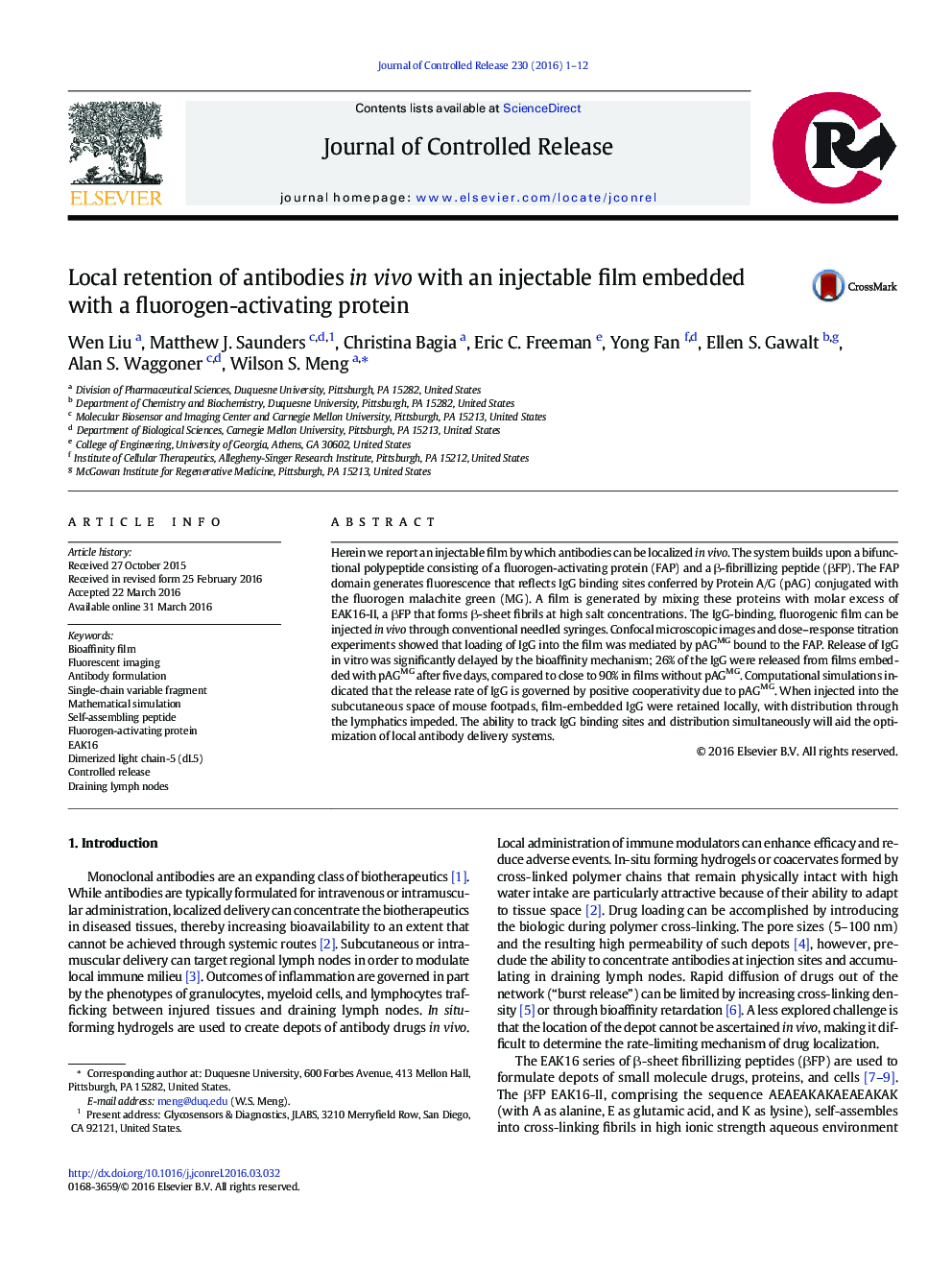| Article ID | Journal | Published Year | Pages | File Type |
|---|---|---|---|---|
| 1423577 | Journal of Controlled Release | 2016 | 12 Pages |
Herein we report an injectable film by which antibodies can be localized in vivo. The system builds upon a bifunctional polypeptide consisting of a fluorogen-activating protein (FAP) and a β-fibrillizing peptide (βFP). The FAP domain generates fluorescence that reflects IgG binding sites conferred by Protein A/G (pAG) conjugated with the fluorogen malachite green (MG). A film is generated by mixing these proteins with molar excess of EAK16-II, a βFP that forms β-sheet fibrils at high salt concentrations. The IgG-binding, fluorogenic film can be injected in vivo through conventional needled syringes. Confocal microscopic images and dose–response titration experiments showed that loading of IgG into the film was mediated by pAGMG bound to the FAP. Release of IgG in vitro was significantly delayed by the bioaffinity mechanism; 26% of the IgG were released from films embedded with pAGMG after five days, compared to close to 90% in films without pAGMG. Computational simulations indicated that the release rate of IgG is governed by positive cooperativity due to pAGMG. When injected into the subcutaneous space of mouse footpads, film-embedded IgG were retained locally, with distribution through the lymphatics impeded. The ability to track IgG binding sites and distribution simultaneously will aid the optimization of local antibody delivery systems.
Graphical abstractFigure optionsDownload full-size imageDownload high-quality image (36 K)Download as PowerPoint slide
